Discover the Top Hiking Trails: Unveil the 10 Best Hikes in Colorado
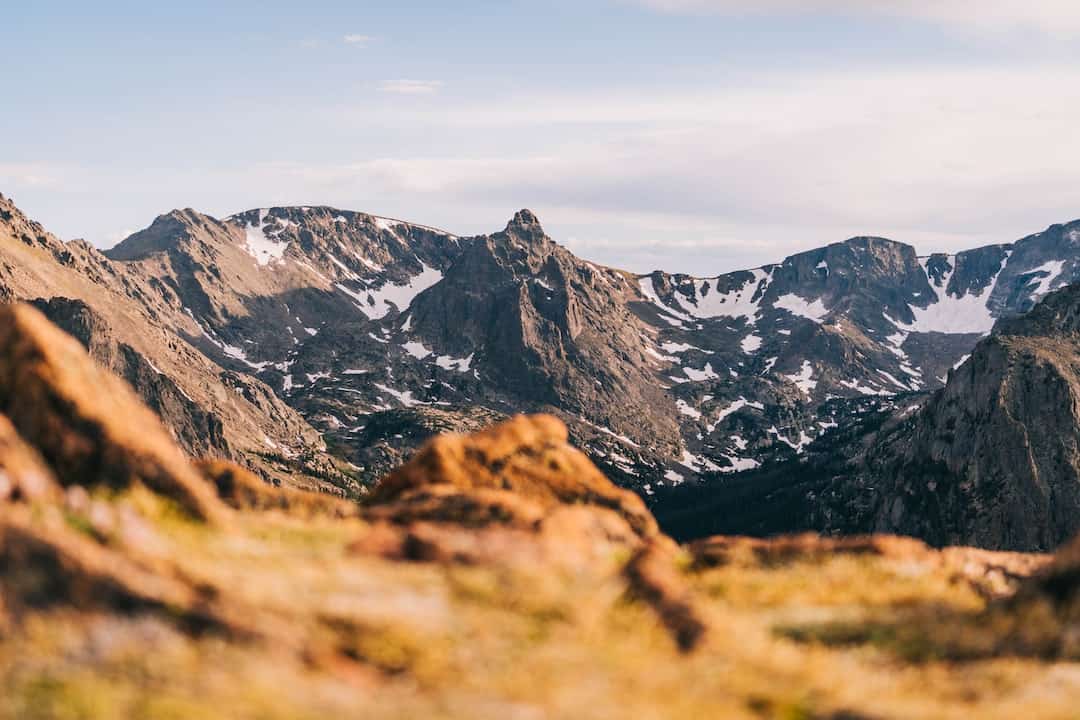
Welcome to the magnificent outdoors of Colorado, a sanctuary for hikers and nature lovers alike! With its awe-inspiring array of landscapes, Colorado is a place where the plains and the sky meet, and majestic mountains provide a stunning backdrop for some of the most spectacular trails in the United States. In this blog, we will guide you through the top 10 best hikes in Colorado.
Colorado has a wide range of landscapes that cater to hikers of all types. You can enjoy the tranquil valleys with their wildflowers or adventure on the rugged peaks of the Rocky Mountains. Whether you are an experienced backpacker looking for an uphill challenge or a casual hiker looking for a picturesque day trip, the trails in Colorado are sure to provide a memorable experience.
Every hiking trail in Colorado is one-of-a-kind, winding through the magnificent natural beauty of the state. So, put on your hiking boots, bring along your sense of adventure, and set off on an unforgettable journey to explore the trails that make Colorado a true paradise for hikers!
Why You Should Try Hiking in Colorado
Embarking on a hike in Colorado is not just a journey through nature; it’s an adventure into some of the most breathtaking landscapes in the United States.
With its unique combination of rugged mountains, serene lakes, and diverse wildlife, Colorado offers an unparalleled hiking experience.
Here are some compelling reasons why hitting the trails in this Rocky Mountain state should be on every hiker’s bucket list.
Natural Beauty:

Colorado is renowned for its natural beauty, featuring some of the most awe-inspiring landscapes in North America.
The state’s Rocky Mountain views are particularly famous, with towering peaks that seem to reach the sky and crystal-clear alpine lakes nestled in the valleys.
Whether you’re exploring the vibrant wildflower meadows of the Front Range or admiring the serene waters of Blue Lake, the picturesque scenery of Colorado provides a stunning backdrop for every hiking adventure.
Diverse Trails:
The state of Colorado boasts a wide array of trails that cater to the diverse preferences of hikers.
If you are looking for a relaxed day hike, you should try the tranquil trails in Colorado Springs that take you through picturesque landscapes.
On the other hand, if you are an adventurous soul, you can take on backpacking trips through the rugged wilderness of the San Juan Mountains or the Indian Peaks.
The trails in Colorado are designed to meet the needs of every hiker, regardless of their skill level and preference.
From the gentle walks along the lake trails to the challenging climbs up to the glacier viewpoints, there’s something for everyone.
Wildlife and Flora:

Hiking in Colorado offers a unique opportunity to surround yourself with a rich variety of flora and fauna.
The trails serve as a pathway to witness the majestic elk, inquisitive marmots, and if you’re fortunate enough, the rare bighorn sheep.
The plant life is just as fascinating, with wildflowers creating a kaleidoscope of colors in the meadows during the summer, and the aspen trees transforming the hillsides into a golden paradise during the fall.
Health Benefits:
The pristine natural environments of Colorado offer immense health benefits to those who love hiking.
Hiking is an excellent way to improve cardiovascular health, strengthen muscles, and enhance balance.
The natural surroundings are incredibly tranquil and beautiful, and spending time here can reduce stress, improve mood, and boost overall mental well-being.
Family-Friendly Activities:
Colorado is an excellent destination to go hiking with your family, as it offers a variety of trails suitable for hikers of all ages.
Locations such as Garden of the Gods in Colorado Springs have easy-to-follow trails, which are ideal for young children and elderly relatives.
These hikes provide more than just a simple stroll; they are an opportunity for families to bond, learn about nature, and create lasting memories in the great outdoors.
In summary, hiking in Colorado is more than just a physical activity; it’s an experience that enriches the soul, invigorates the body, and provides endless opportunities for adventure and family fun.
Spotlight on Colorado Local Communities

- Colorado Springs: Gateway to some of the most scenic trails in the state, including those in Garden of the Gods and Pike National Forest.
- Glenwood Springs: Known for its proximity to Hanging Lake Trail and the vast wilderness of White River National Forest. This community offers a perfect blend of outdoor adventure and small-town charm.
- Boulder: Home to Chautauqua Park and a gateway to numerous trails in the Flatirons, Boulder combines outdoor recreation with a vibrant cultural scene.
- Estes Park: The base camp for Rocky Mountain National Park, providing access to trails like Emerald Lake and Sky Pond.
- Breckenridge: Not just a ski destination, it’s also a starting point for hikes to peaks like Quandary Peak.
What to Prepare Before Exploring the Best Hikes in colorado
Before you hit the trails in Colorado, a little preparation can go a long way in ensuring a safe and enjoyable experience. Here’s what you need to consider:
Essential Gear:

Your hiking adventure begins with the right gear. A basic checklist should include:
- Hiking Boots: Durable and comfortable, suitable for varied terrains.
- Day Pack: Lightweight yet spacious enough to carry essentials.
- Water and Snacks: Stay hydrated and energized; Colorado’s elevation can be taxing.
- Weather-Appropriate Clothing: Dress in layers to adapt to sudden weather changes.
- Navigation Tools: A map and compass, or a GPS device.
- First Aid Kit: For unexpected minor injuries.
- Sun Protection: Sunglasses, sunscreen, and a hat to shield from high-altitude sun rays.
- Headlamp or Flashlight: Especially if you plan to hike early morning or late evening.
- Emergency Shelter: A lightweight tent or bivy can be crucial in unexpected situations.
Safety Tips:
- Stay on Marked Trails: This protects both you and the fragile ecosystems.
- Check the Weather: Mountain weather can be unpredictable.
- Tell Someone Your Plans: Always let someone know where you’re going and when you expect to return.
- Be Wildlife Aware: Understand how to observe wildlife from a distance safely.
- Respect Trail Etiquette: Uphold principles like ‘Leave No Trace’ and yield to uphill hikers.
Trail Selection:

- Assess Your Skill Level: Choose trails that match your hiking experience and fitness level.
- Research the Trail: Utilize resources like AllTrails or local hiking guides for detailed trail information.
- Consider the Season: Some trails are best in summer, while others offer spectacular fall colors or spring wildflowers.
- Interests: Whether you’re into birdwatching, photography, or summit views, select trails that align with your interests.
Hiking Tips and Tricks
- Start Early: To avoid crowds and afternoon thunderstorms, especially in the mountains.
- Pace Yourself: Especially at higher elevations, to prevent exhaustion and altitude sickness.
- Hydration is Key: Drink plenty of water before and during your hike.
- Leave No Trace: Pack out what you pack in to preserve the natural beauty.
- Stay on Trail: Protects both you and the environment.
- Check Trail Conditions: Especially important for trails at higher elevations or those known for rapid weather changes.
- Wear Layers: Weather can change quickly, so be prepared with appropriate clothing.
- Wildlife Encounters: Keep a safe distance from wildlife and never feed animals.
Photography and Memory Making
- Golden Hour: Early morning or late afternoon light is perfect for photography.
- Panoramas: Use panoramic mode to capture the vastness of the landscapes.
- Wildlife Shots: Use a zoom lens for wildlife; never approach animals to get a photo.
- Capture the Detail: Focus on small details like wildflowers or interesting rock formations for unique shots.
- Use a Tripod: For stability and clarity, especially in low light conditions.
- Respect the Environment: Stay on trails and avoid damaging the landscape while setting up shots.
- Backup Your Photos: Regularly save your images to avoid losing precious memories.
- Include People: Adding a person to landscapes can provide a sense of scale and add interest to your shots.
Preparation is key to a successful and memorable hiking trip. With the right gear, a mindful approach to safety, and a trail that matches your interests and abilities, you’re all set to explore the beauty of Colorado’s trails.
Top 10 Best Hikes in Colorado
Colorado’s landscapes offer a stunning array of hiking trails, each with its unique beauty and challenges.
Here are the top 10 hikes that stand out for their breathtaking views, diverse terrains, and unforgettable experiences.
Emerald Lake Trail – Rocky Mountain National Park

- Rating: Moderate
- Length: 5.1 km
- Est. Time: 1h 39m
Embark on a journey through Tyndall Gorge to reach the stunning Emerald Lake.
This trail is a favorite among visitors of Rocky Mountain National Park.
Your adventure begins at the Bear Lake Trailhead, leading you through enchanting pine forests and alongside crystal-clear alpine lakes like Nymph Lake and Dream Lakes.
During your trek, you’ll be captivated by the spectacular views of craggy peaks and natural wonders.
The trail will offer you breathtaking sights of landmarks like Flattop Mountain, Hallett Peak, Glacier Gorge, and the icy expanse of Tyndall Glacier.
This 5.1-km out-and-back trail, located near Estes Park, Colorado, is generally considered a moderate challenge, typically taking around 1 hour and 39 minutes to complete.
It’s a hotspot for activities like fishing, hiking, and snowshoeing, so expect some company along the way.
The trail is accessible throughout the year, offering a mesmerizing experience in any season. Note that dogs are not permitted on this trail, ensuring the preservation of its natural beauty.
Sky Pond via Glacier Gorge Trail – Rocky Mountain National Park

- Rating: Hard
- Length: 13.8 km
The Sky Pond hike is known for its stunning views in Rocky Mountain National Park.
The journey starts at the Glacier Gorge Trailhead on Bear Lake Road and takes you on an awe-inspiring exploration.
Along the way, you’ll visit several landmarks, including the cascading Alberta Falls, the serene Loch (also known as Loch Vale), the reflective Lake of Glass, and the majestic Timberline Falls.

This path is considered challenging, spanning 13.8 km as an out-and-back trail near Estes Park, Colorado, but it rewards hikers with its unparalleled beauty.
It’s a popular spot for backpacking, camping, and fishing, attracting many outdoor enthusiasts.
The trail is open year-round, offering a stunning journey in any season. Dogs are not permitted on the trail, as it helps preserve the natural ecosystem.
Lake Haiyaha – Rocky Mountain National Park

- Rating: Moderate
- Length: 6.4 km
- Est. Time: 2h 2m
Lake Haiyaha, located within Rocky Mountain National Park, is a favorite destination for many visitors.
It is known for its crystal-clear waters where trout can often be seen swimming.
Impressive boulders and rock formations surround the lake, adding to its charm.
In 2022, the lake underwent a remarkable transformation, taking on a milky turquoise hue due to landslides in the nearby Chaos Canyon.
Embark on a 6.4-km out-and-back trail near Estes Park, Colorado.
This trail is moderately challenging and takes about 2 hours and 2 minutes to complete on average.
It is a well-known spot for both fishing and hiking enthusiasts, so expect to encounter other visitors along the way.
The best time to experience this trail is from June through October, when the weather and trail conditions are most favorable.
However, dogs are not allowed on this trail to ensure a safe and undisturbed environment for the local wildlife and other hikers.
Along the way, you’ll be treated to views of several high-altitude lakes and intermittent glimpses of the majestic Long’s Peak.
Garden of the Gods Loop – Colorado Springs
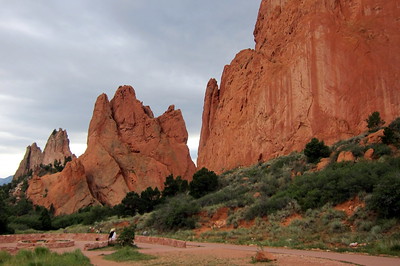
- Rating: Easy to Moderate
- Length: Approximately 6.4 km
The Garden of the Gods Loop is a trail that you must visit if you’re in Colorado Springs.
The trail is moderate and easy, and it passes through one of the most iconic landscapes in Colorado.
During the hike, you’ll be surrounded by incredible red rock formations that offer amazing views and photo opportunities.
The trail is family-friendly and accessible, perfect for all skill levels.
As you hike, you may be fortunate enough to spot wildlife, such as bighorn sheep and mule deer.
The Garden of the Gods Visitor and Nature Center also provides educational exhibits about the park’s geology, ecology, and history.
Royal Arch Trail – Chautauqua Trailhead

- Rating: Hard
- Length: 5.3 km
Located near Boulder, Colorado, this remarkable hike offers stunning views and a chance to experience the iconic rock formations that define the area intimately. The trail starts near the ranger cottage at Chautauqua Park Trailhead, and leads you along the scenic Bluebell Trail as you head south.
This 5.3-km out-and-back trail is often considered challenging and is a popular spot for hiking, snowshoeing, and running. Expect to share the trail with fellow outdoor enthusiasts. The trail is most enjoyable from March through October when the weather is good.
Dog lovers will be happy to know that this trail is pet-friendly, with certain areas where dogs can roam off-leash.
Mount Bierstadt Trail – Mount Evans Wilderness

- Rating: Hard
- Length: 11.6 km:
The Mount Blue Sky Wilderness Area in Colorado is home to one of the state’s most popular fourteener trails: Mt Bierstadt.
Although it’s considered a good starting point for many hikers, the trail presents a significant challenge with its high elevation gain.
The adventure commences at the Bierstadt Trailhead, located in a convenient parking area just off Exit 228 on Guanella Pass Road.
After passing through the Arapaho National Forest, the trail soon becomes more rugged as it enters the Mount Blue Sky Wilderness.
This 11.6-km out-and-back trail near Guanella Pass is well-known for its level of difficulty and is frequently visited by hiking enthusiasts.
It’s best to hike between June and October when the conditions are most favorable.
If you plan to bring your dog, it’s allowed but must be kept on a leash.
You’ll likely encounter other adventurers along the way due to the trail’s popularity.
Saint Mary’s Glacier – Arapaho National Forest

- Rating: Moderate
- Length: 2.6 km
Located near Idaho Springs, Colorado, the hike to Saint Mary’s Glacier is a 2.6-km out-and-back trail that offers breathtaking views of an enchanting alpine lake and a majestic glacier.
The hike is known for its awe-inspiring scenery and is generally considered moderately challenging.
During the summer months, the glacier and surrounding landscapes present a mesmerizing view.
In winter, the snow-blanketed terrain transforms the hike into a stunning, picturesque adventure.
If you plan to hike this trail during the colder months or venture onto the glacier, it is essential to have the necessary technical gear for a safe and fulfilling experience.
The trail is popular for cross-country skiing, fishing, and hiking and is likely to attract other outdoor enthusiasts.
The best time to visit is from April through October when the trail is most accessible and enjoyable.
Dog owners can bring their pets along, but they should remain on a leash.
Lost Lake via Hessie Trail – Roosevelt National Forest

- Rating: Moderate
- Length: 6.4 km
- Est. Time: 2h 1m:
The Lost Lake trail, located near Nederland, Colorado, is an excellent option for a day trip that leads to a beautiful, serene destination.
Lost Lake itself is a perfect place for a mid-hike lunch break, offering picturesque views and opportunities to observe the local wildlife.
Keep an eye out for moose, as they are often seen in this area.
Note that the trail may have snow well into the summer months, which adds a different element to the hiking experience.
This 6.4-km out-and-back trail is generally considered moderately challenging, with an average completion time of around 2 hours and 1 minute.
It is popular among backpackers, campers, and anglers, so expect some company during your hike.
The trail is accessible year-round, offering a beautiful experience regardless of the season.
If you plan to bring your dog, they are welcome but must be kept on a leash for the entire hike.
The Manitou Incline – Pike National Forest

- Rating: Hard
- Length: 6.4 km
- Est. Time: 3h 14m
The Incline Trail is a challenging hike located near Manitou Springs in Colorado.
This trail follows the remains of an old Cog railway, which leads to the top of Manitou Mountain.
It is known for its steep ascent, gaining around 2000 feet over just one mile with an average grade of 45%.
The trail is a test of endurance and strength, and there are three points where hikers can exit if needed.
The final exit point connects to Barr Trail, which is the recommended route for descending from the summit, as hiking down the Incline itself is discouraged.
This 6.4-km loop trail is considered highly challenging and is best suited for experienced hikers.
On average, it takes about 3 hours and 14 minutes to complete.
Despite its difficulty, the trail is quite popular for hiking and walking, and you can expect to meet fellow adventurers along the way.
The best time to tackle this trail is from April through October when the weather conditions are most favorable.
Please note that dogs are not allowed on this trail to protect the unique environment and ensure the safety of hikers.
Quandary Peak Trail – White River National Forest

- Rating: Hard
- Length: 10.1 km
- Est. Time: 5h 20m
Just a short drive south of Breckenridge, the hike to Quandary Peak presents an exhilarating challenge with its rugged switchbacks and remarkable vistas.
This trek leads to the summit of one of Colorado’s renowned fourteeners and takes you through stunning landscapes with breathtaking views.
The trail is an out-and-back route that spans 10.1 kilometers and is located near Blue River, Colorado. It’s known to be a challenging hike and typically takes about 5 hours and 20 minutes to complete.
The trail is a favorite among hiking and snowshoeing enthusiasts, so it’s common to encounter fellow outdoor lovers on your expedition.
The trail is accessible throughout the year and offers a captivating experience in every season, revealing the diverse beauty of Colorado’s high country.
If you’re hiking with your furry companion, you’ll be pleased to know that dogs are welcome to join the adventure, provided they remain on a leash. This ensures a safe and enjoyable experience for everyone on the trail.
Each trail encapsulates the essence of Colorado’s hiking allure, presenting hikers with a blend of natural beauty, physical challenge, and the tranquility of the great outdoors.
Frequently Asked Trail Questions

What is the best time to hike in Colorado?
The best time for hiking in Colorado primarily depends on the trail and its altitude. Typically, high-altitude trails are perfect during the summer months (June to August), as the snow has generally melted by then. For lower elevation trails, spring (April to June) and fall (September to October) are ideal, as they provide milder temperatures and offer stunning seasonal scenery.
Do I need permits for hiking in Colorado?
Certain areas, particularly those located in national parks or protected wilderness areas, may necessitate permits for overnight camping or hiking. Examining the particular regulations of the area you intend to visit is crucial. For day hikes in most public lands, permits are not required, but it’s always better to verify beforehand.
What are the wildlife safety tips for hiking in Colorado?
Colorado’s wilderness is a natural habitat for a wide range of wildlife, such as bears and mountain lions. To ensure your safety, it is recommended to make noise while hiking to avoid startling any animals. It’s important to maintain a safe distance from wildlife, store your food correctly, and know how to respond if you encounter any wildlife. To be extra cautious in bear country, it’s advisable to carry bear spray as a useful precaution.
Are dogs allowed on trails in Colorado?

There are many trails in Colorado where dogs are allowed, but the rules regarding dogs may differ from one trail to another. While some areas may require dogs to be on a leash, others may not permit them at all, especially in vulnerable wildlife habitats or certain national parks. Therefore, it is always recommended to check the trail regulations regarding dogs before heading out.
What should I do if I encounter a bear or mountain lion on the trail?
If you encounter a bear, do not run. Speak calmly, make yourself appear bigger, and slowly back away. In case of a mountain lion sighting, maintain eye contact, don’t crouch or bend over, and back away slowly. Fight back if attacked.
Is it safe to hike alone in Colorado?
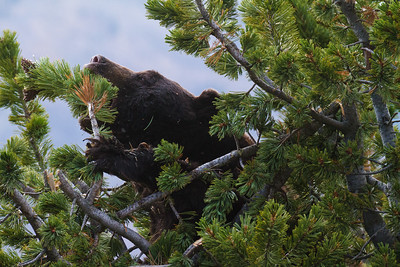
While many people safely hike alone, hiking with others is generally safer. If hiking alone, let someone know your plan and expected return time, carry a map and emergency gear, and be prepared for sudden weather changes and navigation.
What are the rules for camping along hiking trails in Colorado?
When camping in the wilderness, following Leave No Trace principles to preserve the natural environment is important. This involves camping at least 200 feet away from trails and water sources, minimizing the impact of campfires, and packing out all trash. It’s also important to check for specific camping regulations in the area you’re visiting to ensure you’re following all rules and guidelines.
How do I prepare for high-altitude hikes in Colorado?
High altitude can affect anyone, regardless of fitness level. To prepare, acclimatize gradually if possible, stay hydrated, eat energy-rich foods, and know the symptoms of altitude sickness. If symptoms occur, descend to a lower altitude and seek medical help.
Embracing the Majesty of the best trails of Colorado: Parting Thoughts

The allure of hiking in Colorado lies in its remarkable diversity and natural beauty.
From the majestic peaks of the Rocky Mountains to the serene alpine lakes and the unique rock formations of the Front Range, Colorado offers some of the most varied and breathtaking hiking experiences in the United States.
The trails in Colorado provide endless opportunities for exploration and connection with nature.
Colorado has something for everyone, whether you’re seeking a leisurely day hike, an adventurous backpacking trip, or the thrill of conquering a fourteener.
As you set out to discover the wonders of Colorado’s trails, it’s important to remember the significance of respecting the natural environment.
It’s crucial to practice Leave No Trace principles, stay on designated paths, and be mindful of the local wildlife.
Every step you take, brings you closer to nature and carries the responsibility of preserving these landscapes for future generations.
The trails here are not just paths through the wilderness, but also gateways to discovering the beauty of the natural world and the joys of outdoor exploration. Happy hiking!




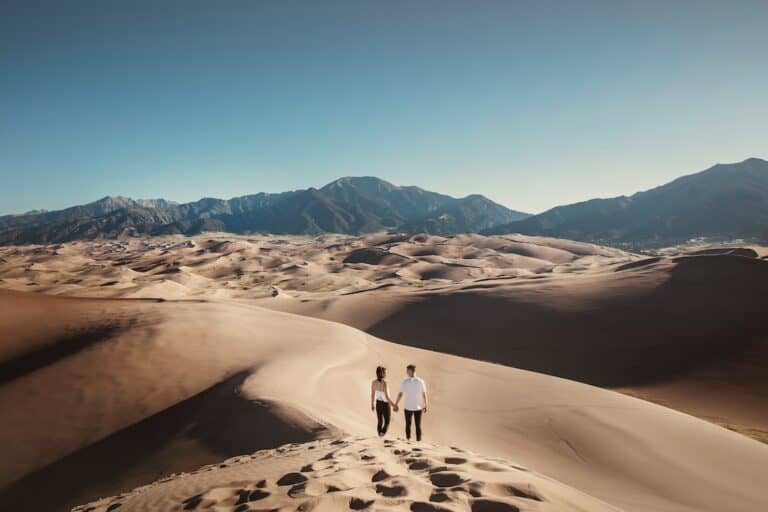

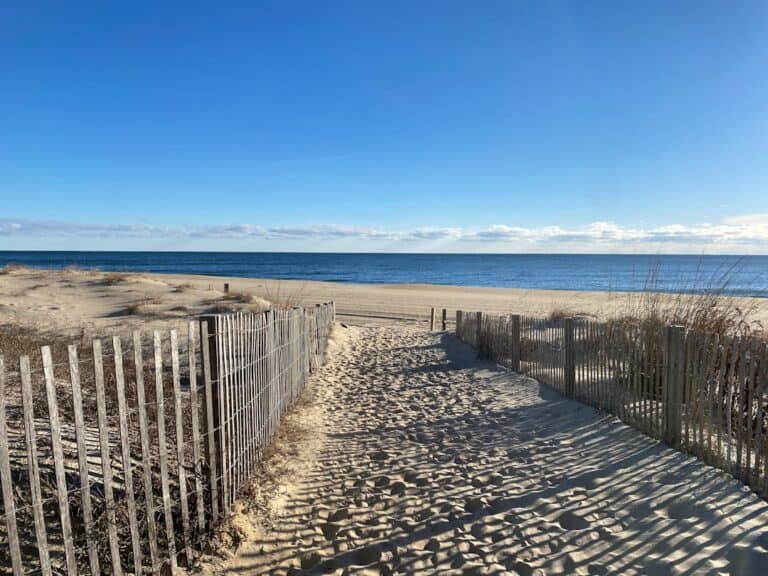
3 Comments
Comments are closed.